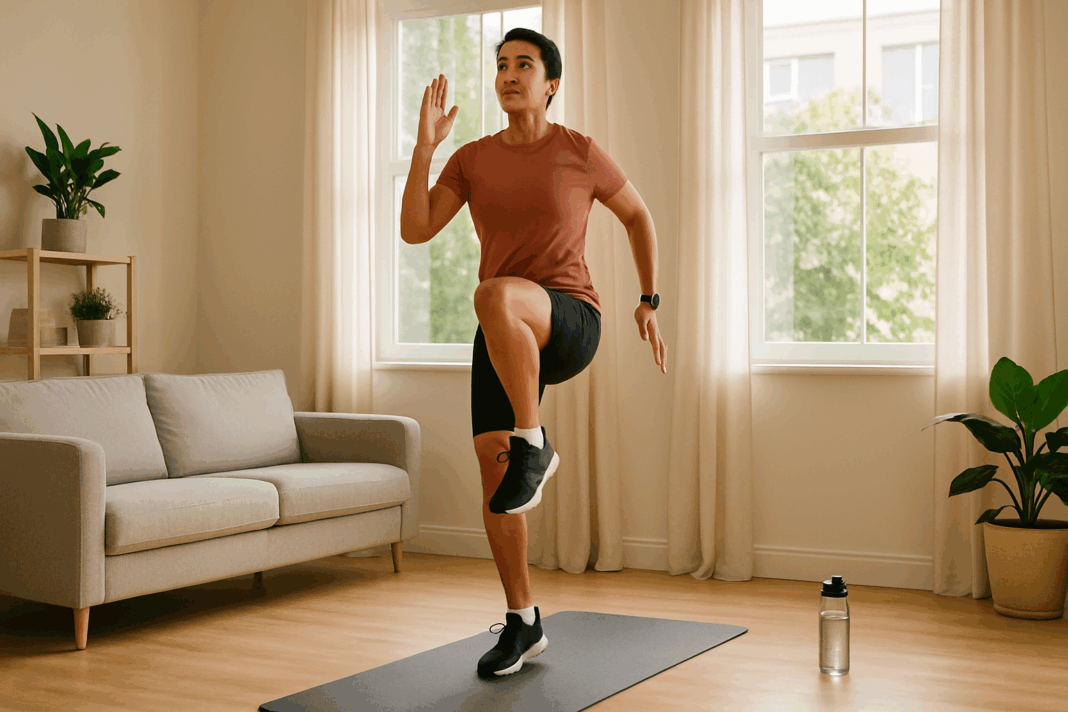Introduction: Why Building Stamina Matters for Everyone
In today’s fast-paced, performance-driven world, building stamina isn’t just a goal reserved for athletes. It’s an essential component of physical and mental health for anyone aiming to improve quality of life, increase productivity, and enjoy greater vitality. Stamina, at its core, is the ability to sustain physical or mental effort over a prolonged period. Whether it’s keeping up with a demanding job, parenting young children, or simply staying active into older age, stamina is the unseen foundation that supports lasting energy, motivation, and physical resilience. Understanding how to increase stamina at home through exercise gives individuals a powerful, accessible tool for long-term wellness.
With many people balancing busy schedules, gym memberships may feel like an extra burden rather than a practical solution. Fortunately, expert-backed research shows that structured at-home routines are highly effective for improving stamina when done consistently. In fact, when tailored properly, stamina building exercises for beginners performed at home can match or even exceed the results of more traditional gym workouts, especially when approached with dedication and strategy. This article explores in depth how to boost endurance through science-based, practical methods that cater specifically to individuals who are new to structured fitness but ready to commit to meaningful improvement.
You may also like: Build Running Stamina Fast: Best Exercises to Increase Endurance and Boost Performance Naturally
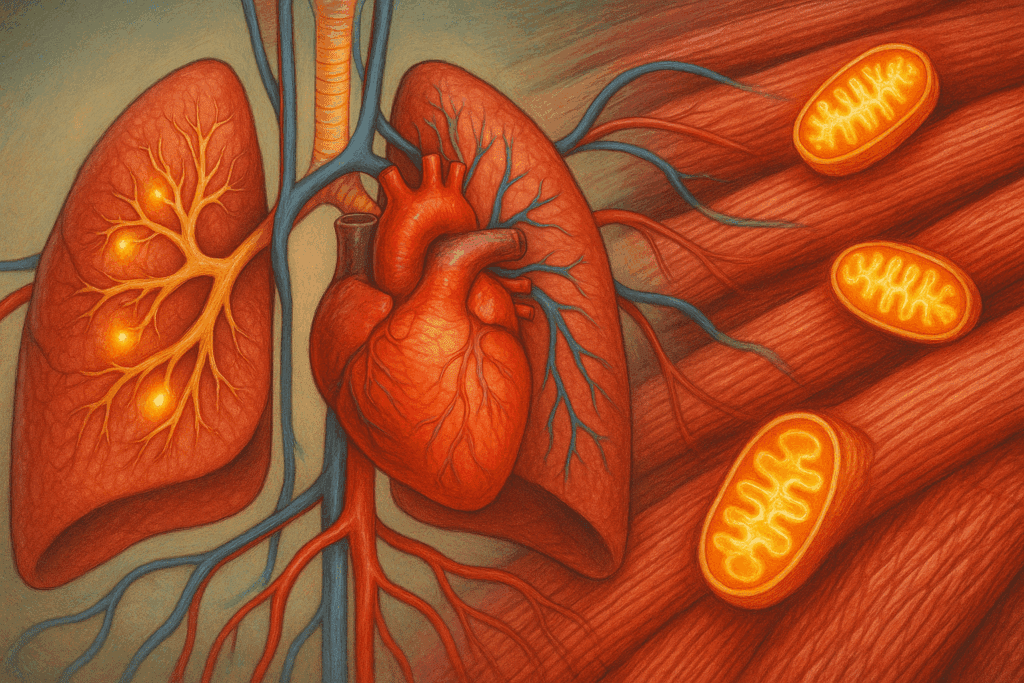
Understanding Stamina and Its Physiological Foundations
Stamina is often mistaken for strength or speed, but in physiological terms, it encompasses much more. It involves the body’s ability to deliver oxygen and nutrients to working muscles while efficiently clearing waste byproducts like lactic acid. Cardiovascular endurance, muscular endurance, and even metabolic flexibility all contribute to the broader concept of stamina. At the cellular level, stamina depends on the function of mitochondria—tiny powerhouses within our cells that generate ATP, the primary energy currency of the body. As individuals improve their cardiovascular health, lung capacity, and muscular efficiency, they also increase mitochondrial density and function, leading to enhanced energy production and reduced fatigue.
Building stamina also has neurological components. As physical activity becomes more habitual, the brain begins to rewire itself to anticipate and support sustained effort. This process, called neuroplasticity, allows the body to adapt more quickly and efficiently over time. The synergy between physical adaptation and neural conditioning means that even small, consistent efforts can have compounding benefits. Therefore, stamina building exercises for beginners should not only focus on intensity but also on sustainability and progression.
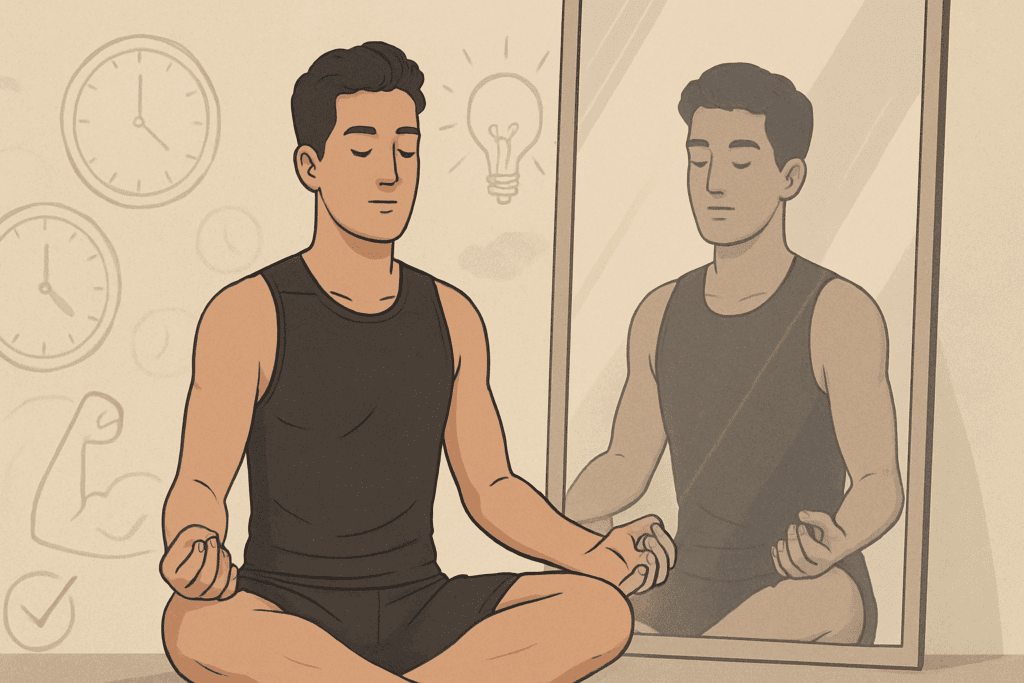
The Psychological Side of Stamina: Motivation, Mental Endurance, and Habit Formation
Physical stamina cannot be fully cultivated without acknowledging the mental endurance that underpins it. Staying active when energy is low, when distractions arise, or when immediate gratification beckons requires psychological fortitude. This is where motivation, discipline, and habit play central roles. Research in behavioral psychology emphasizes the importance of intrinsic motivation—doing something because it is inherently rewarding—as a stronger long-term driver than extrinsic motivators like aesthetics or social approval.
For beginners starting at home, creating a routine that is simple, rewarding, and easy to integrate into daily life significantly increases the likelihood of long-term adherence. Mental stamina grows as individuals learn to embrace discomfort and persist through moderate challenges. This mental edge becomes particularly important when energy dips or progress plateaus, a common experience during any fitness journey. Understanding how to increase stamina at home exercise routines means building mental habits alongside physical practices, thus developing a comprehensive resilience that benefits multiple areas of life.
Designing an Effective At-Home Stamina Training Plan for Beginners
Crafting a well-rounded stamina program doesn’t require expensive equipment or complex schedules. What it does require is intentionality, consistency, and progressive overload—the gradual increase of intensity, duration, or difficulty to stimulate adaptation. A balanced approach includes aerobic exercises to enhance cardiovascular capacity, strength training to support muscular endurance, and mobility work to ensure functional movement.
When introducing stamina building exercises for beginners, start with achievable, low-impact movements that can be scaled up over time. Walking briskly around your neighborhood, climbing stairs, or engaging in simple dance routines can effectively raise heart rate and stimulate cardiovascular health. Resistance training using body weight—such as squats, pushups, and lunges—can be performed in short circuits to develop muscular endurance while also providing aerobic benefits when done in quick succession.
Moreover, incorporating interval-style training can add variety and accelerate progress. High-Intensity Interval Training (HIIT), for example, alternates short bursts of intense activity with rest periods, making it both time-efficient and metabolically demanding. For beginners, this might include 20 seconds of jumping jacks followed by 40 seconds of rest, repeated several times. Over time, intervals can be lengthened, and rest periods shortened to increase the challenge and drive stamina gains.
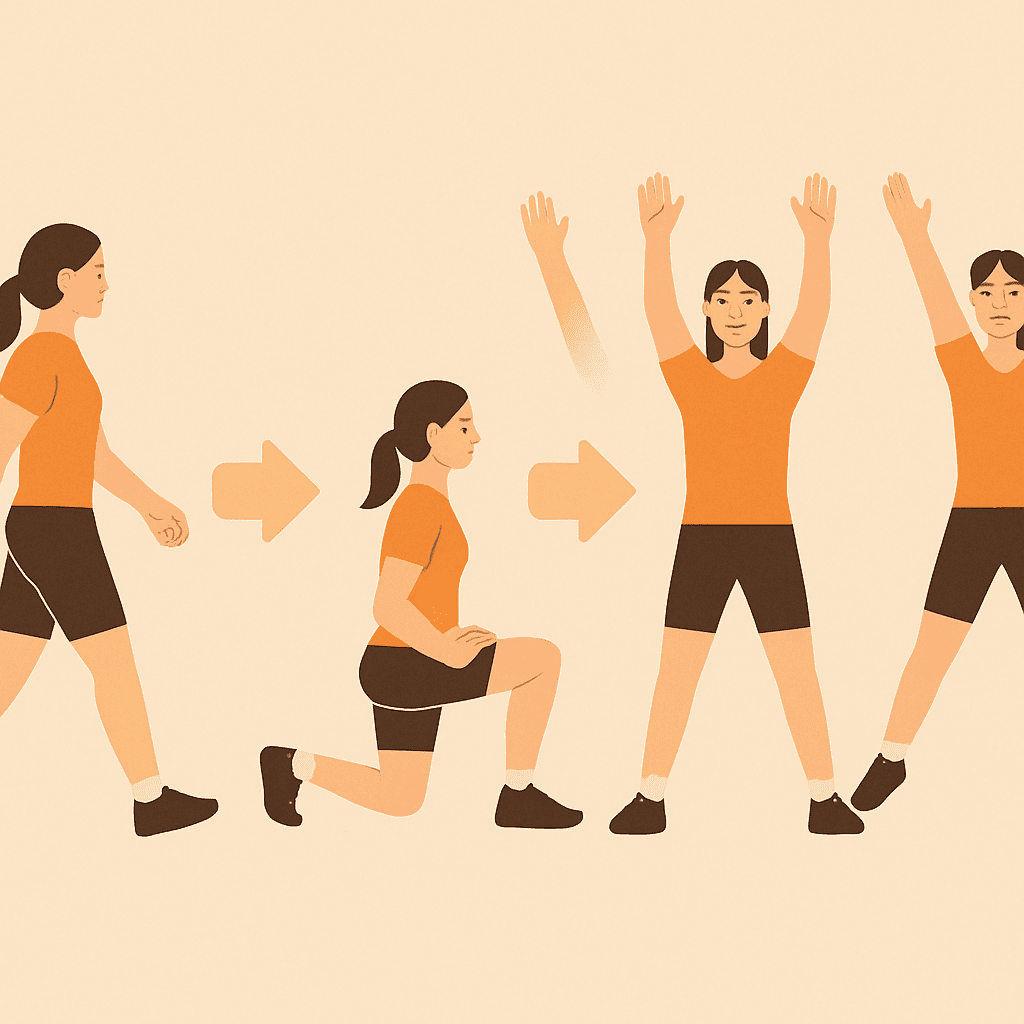
Cardio-Focused Routines to Improve Heart and Lung Capacity
Cardiovascular endurance is a key pillar of overall stamina, as it determines how effectively your heart and lungs deliver oxygen to your muscles during extended periods of activity. At-home cardio routines require no special equipment and can be as simple as jogging in place, jumping rope, or following along with an online aerobic video. These movements, when sustained for at least 20-30 minutes, begin to stimulate improvements in VO2 max—a measure of the body’s maximum oxygen uptake.
For individuals seeking to understand how to increase stamina at home exercise practices should include steady-state cardio two to three times per week. These sessions should be long enough to create mild fatigue but not so intense that they cause burnout. As your cardiovascular system adapts, you may find it easier to breathe during exertion, experience lower resting heart rates, and recover more quickly between bouts of effort. These are all markers of increased aerobic stamina, and they provide a strong foundation for more demanding forms of exercise in the future.
Additionally, integrating rhythmic breathing techniques during cardio sessions can enhance endurance by improving oxygen efficiency and calming the nervous system. Conscious breathing—such as inhaling for three counts and exhaling for five—helps regulate heart rate and sustain energy levels, particularly during longer sessions. Over time, such practices not only improve physical stamina but also enhance stress resilience and emotional regulation.
Strength-Endurance Training Without Weights
Many people assume that building stamina is purely an aerobic endeavor, but muscular endurance is equally critical. Muscles that tire quickly force the heart and lungs to work harder to compensate, thereby reducing overall efficiency. Targeting muscular stamina at home requires little more than space and commitment. Exercises like wall sits, isometric planks, and dynamic bodyweight moves challenge muscles to work for extended durations without fatigue.
One of the most effective stamina building exercises for beginners is the bodyweight circuit. For example, performing squats, pushups, mountain climbers, and glute bridges in succession for 30 to 60 seconds each can build muscular endurance while keeping the heart rate elevated. These exercises target multiple muscle groups simultaneously, creating a comprehensive workout that improves both local muscular fatigue resistance and overall stamina.
To maximize results, beginners should focus on form and gradually increase the number of repetitions or circuit rounds as their strength improves. Unlike traditional strength training aimed at building bulk, stamina-based strength routines use higher repetitions with minimal rest to condition muscles for prolonged exertion. Over time, this leads to improved efficiency, reduced risk of injury, and greater capacity for sustained activity.

Mobility and Flexibility: The Overlooked Elements of Endurance
While often neglected in stamina-focused training, mobility and flexibility are crucial components of long-term endurance. Tight or underused muscles can create mechanical inefficiencies, which force the body to expend more energy during movement. This leads to quicker fatigue and increased injury risk. Integrating mobility routines into your at-home workout can significantly enhance performance and comfort, particularly during high-repetition or long-duration exercise.
Dynamic stretches before workouts—such as leg swings, arm circles, and torso rotations—prepare the body for movement by increasing blood flow and range of motion. Post-exercise static stretching helps maintain flexibility, reduces muscle soreness, and promotes recovery. When practiced consistently, flexibility training improves neuromuscular coordination and joint stability, which together support smoother, more efficient movement patterns.
Understanding how to increase stamina at home exercise routines means acknowledging the value of a holistic approach. Including yoga or Pilates once or twice a week can supplement traditional training by enhancing core stability, breath control, and body awareness. These qualities are essential not only for physical stamina but also for maintaining focus and composure under physical stress.
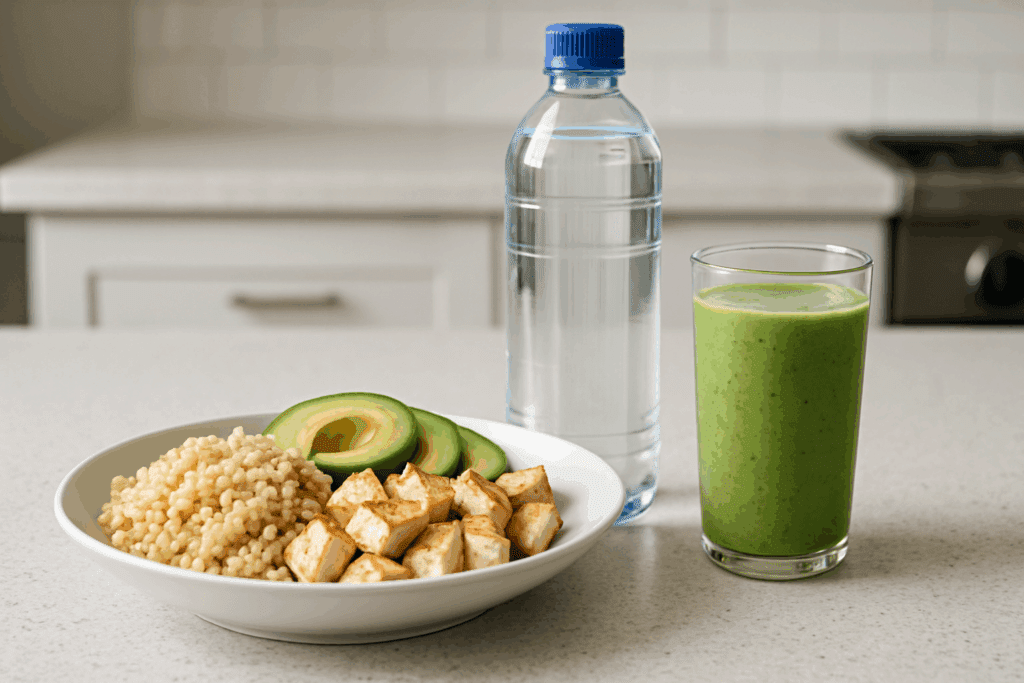
Nutrition and Hydration: Fueling Your Stamina Journey
No stamina-building regimen is complete without proper attention to nutrition and hydration. The body requires a balanced intake of macronutrients to sustain prolonged activity. Carbohydrates, in particular, provide readily available energy during aerobic efforts, while proteins support muscle repair and recovery. Healthy fats contribute to long-term energy regulation and hormone production, all of which affect stamina levels.
Eating a balanced meal 1-2 hours before your workout can help maintain energy levels and delay the onset of fatigue. A combination of whole grains, lean protein, and a moderate amount of healthy fat ensures that you start your session with optimal glycogen stores. Post-workout meals or snacks should focus on replenishment—think a smoothie with fruit, Greek yogurt, and a spoonful of nut butter to support both energy recovery and muscle repair.
Hydration is equally critical. Even mild dehydration can significantly impair physical performance by decreasing blood volume, reducing sweat rate, and elevating core temperature. Drinking water consistently throughout the day, as well as during and after workouts, helps maintain cellular function and supports stamina. For longer sessions, a pinch of sea salt or an electrolyte drink may help replace essential minerals lost through sweat.
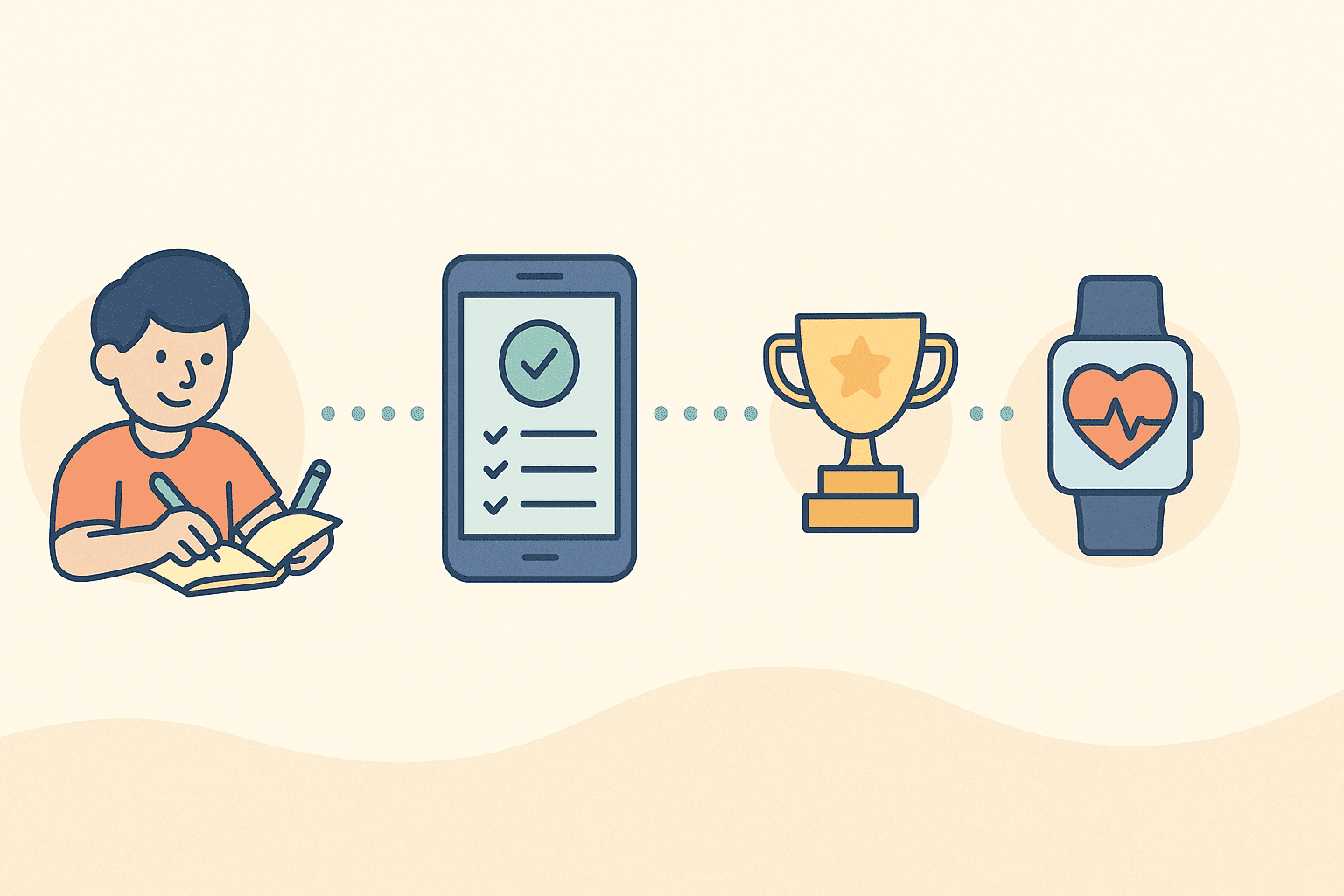
Tracking Progress and Staying Motivated at Home
Consistency is the cornerstone of any stamina-building journey, and one of the best ways to stay consistent is by tracking progress. Beginners can benefit from maintaining a simple fitness journal or using a mobile app to record workout duration, perceived exertion, and rest intervals. Noting these metrics makes it easier to recognize improvement over time, which in turn reinforces motivation.
Celebrating small milestones, such as completing a full week of scheduled workouts or increasing the duration of a cardio session, builds confidence and reinforces the habit loop. Incorporating variety—such as alternating between dance cardio, bodyweight strength, and yoga—also helps prevent mental fatigue and physical plateaus. Surrounding yourself with supportive influences, whether online communities or workout partners, can further encourage accountability and commitment.
Remember, understanding how to increase stamina at home exercise routines doesn’t require perfection—just progression. The body responds positively to consistency and challenge, and even modest efforts can yield significant improvements when practiced regularly. By focusing on small, attainable goals and making fitness an integral part of daily life, stamina becomes a natural and empowering outcome.
Frequently Asked Questions: Expert Insights on Building Stamina at Home
What are some overlooked factors that influence stamina building at home? While physical activity is often emphasized, several lifestyle variables profoundly impact your stamina gains. Quality sleep, stress management, and meal timing can either support or undermine your efforts. For instance, poor sleep reduces oxygen efficiency and slows muscle recovery, ultimately impairing progress from stamina building exercises for beginners. Similarly, chronic stress triggers cortisol release, which can sap energy and reduce motivation. When learning how to increase stamina at home exercise routines, optimizing rest and reducing environmental distractions can help sustain long-term performance improvements.
Can building stamina at home improve cognitive function? Yes, recent studies in neurophysiology show that regular cardiovascular activity enhances blood flow to the brain, improving memory, focus, and overall mental clarity. Stamina building exercises for beginners, particularly those that elevate heart rate for sustained periods, trigger the release of neurotrophic factors like BDNF (brain-derived neurotrophic factor), which supports neural regeneration. In practical terms, this means people who consistently follow how to increase stamina at home exercise plans often report sharper thinking and better emotional regulation. Integrating light cognitive challenges during workouts—like counting in reverse or listening to educational podcasts—can further enhance this benefit.
How does age affect the outcomes of at-home stamina building? Although age naturally reduces baseline endurance and muscle mass, stamina can be built at any stage of life. The key difference lies in recovery time and adaptation rate. Older adults following stamina building exercises for beginners may notice slower progress, but their bodies still respond positively to consistent stimuli. In fact, research supports that moderate-intensity routines tailored to individual capacity can dramatically improve endurance even in populations over 60. Understanding how to increase stamina at home exercise strategies for aging adults involves choosing joint-friendly movements and allowing adequate rest between sessions.
Are there any technological tools that can support stamina development at home? Absolutely. Wearable devices like fitness trackers, smartwatches, and heart rate monitors provide real-time data that enhances training precision. These tools can help beginners assess their aerobic zones, track workout intensity, and measure recovery trends—all vital for tailoring effective stamina building exercises for beginners. There are also mobile apps that offer structured plans and virtual coaching specifically designed to teach users how to increase stamina at home exercise efficiently. When used mindfully, technology offers valuable feedback loops and accountability structures that improve outcomes.
What psychological techniques can enhance stamina when training alone at home? Staying motivated in isolation can be challenging, but cognitive behavioral strategies can make a substantial difference. Visualization, goal setting, and positive self-talk are proven techniques that enhance mental stamina during physical training. For example, envisioning a successful workout before starting can prime the nervous system for performance. Beginners practicing how to increase stamina at home exercise routines benefit from creating personal rituals—such as listening to a specific playlist or journaling post-session—to reinforce consistency. These mental frameworks often bridge the gap between intention and execution, particularly when external support is limited.
How should beginners adjust stamina routines during illness or fatigue? It’s crucial to listen to your body and modify your regimen during periods of illness, stress, or fatigue. Rather than ceasing activity altogether, substituting lighter movement such as stretching, mobility flows, or gentle walking can help maintain habit continuity. For those regularly engaging in stamina building exercises for beginners, reducing intensity without stopping completely can prevent regression. When evaluating how to increase stamina at home exercise during low-energy days, focus on movement quality over quantity. Prioritizing recovery doesn’t mean losing progress—it often enhances long-term resilience.
Can social accountability be maintained when exercising alone at home? Yes, and it’s increasingly accessible thanks to digital platforms. Joining virtual fitness communities, participating in social media challenges, or partnering with an accountability buddy via messaging apps are all effective strategies. These methods help beginners stay consistent with stamina building exercises for beginners by leveraging peer support. Online leaderboards, group check-ins, and goal-sharing platforms offer a shared sense of purpose even in a solo environment. As people explore how to increase stamina at home exercise routines, digital community engagement becomes a vital motivational asset.
Are there any breathing techniques that enhance stamina beyond just fitness gains? Definitely. Breath control is not only beneficial for physical stamina but also for nervous system regulation and emotional stability. Techniques like box breathing (inhale-hold-exhale-hold in equal counts) and nasal-only breathing during light exercise improve CO2 tolerance and lung efficiency. Implementing these while performing stamina building exercises for beginners helps condition the diaphragm and increases oxygen utilization. Furthermore, understanding how to increase stamina at home exercise routines through breathwork offers benefits that extend into daily life—like reducing anxiety, improving sleep, and enhancing focus.
What should I do if I hit a plateau in my at-home stamina gains? Plateaus are common and often indicate it’s time to vary stimulus. You can manipulate several variables: increase duration, raise intensity, shorten rest intervals, or introduce new movement patterns. For example, transitioning from walking to light jogging or adding bodyweight resistance can reignite adaptation. Those engaging in stamina building exercises for beginners should periodically reassess their progress and set new micro-goals. When refining how to increase stamina at home exercise programming, variety and progression are key to avoiding stagnation.
How can I measure real-world improvements in stamina without fitness tests? While formal tests are helpful, everyday benchmarks offer equally valuable feedback. Indicators like climbing stairs without breathlessness, carrying groceries with ease, or finishing tasks with more energy reflect increased endurance. As you continue with stamina building exercises for beginners, you may also notice faster recovery times between sets or less soreness post-exercise. These are subtle but meaningful signs that your body is adapting. Measuring how to increase stamina at home exercise effectiveness can be as simple as reflecting on how you feel during day-to-day activities and comparing that to a few weeks prior.
Conclusion: Building a Sustainable Stamina Lifestyle from Home
Stamina is more than just the ability to endure a long run or finish a demanding workout. It represents a fusion of physical endurance, mental resilience, and lifestyle balance that allows individuals to thrive in all areas of life. By understanding the foundational science behind stamina, embracing effective yet accessible routines, and fostering consistency through motivation and self-care, anyone can build real, lasting stamina from the comfort of their own home.
Expert-backed stamina building exercises for beginners offer a practical and evidence-based path to enhanced vitality. When combined with thoughtful nutrition, purposeful movement, and regular reflection, these practices create a powerful framework for lifelong endurance. Whether your goal is to climb stairs without breathlessness, keep up with your kids, or simply feel more energetic day to day, developing at-home strategies for boosting stamina is a meaningful and rewarding investment in your health.
Ultimately, the answer to how to increase stamina at home exercise routines lies not in complicated regimens or expensive gear but in your willingness to begin, commit, and grow. With each step, each breath, and each session, you are laying the groundwork for a stronger, more resilient version of yourself—a version built not in the gym, but in the dedication of everyday life.
Was this article helpful? Don’t let it stop with you. Share it right now with someone who needs to see it—whether it’s a friend, a colleague, or your whole network. And if staying ahead on this topic matters to you, subscribe to this publication for the most up-to-date information. You’ll get the latest insights delivered straight to you—no searching, no missing out.

